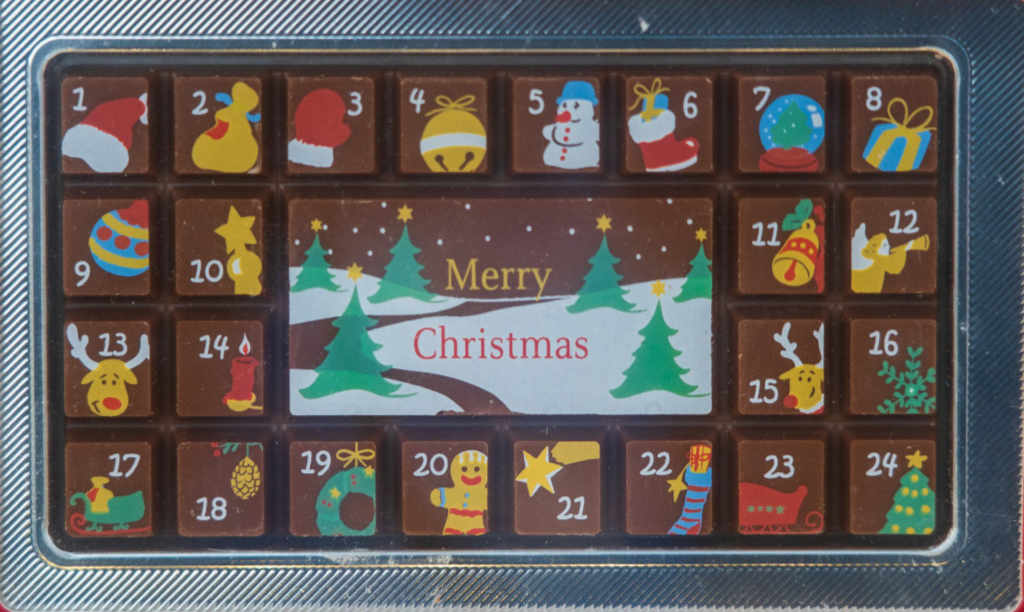
Advent calendars are already in the shops. They have been a feature of the festive season for more than 170 years and originated in Germany. Printed versions started to be produced in the early 1900s. 16 million advent calendars are sold in the UK every year, most containing single-use plastic. The actual proportion of chocolate to plastic is very small. How, then, can we reduce the plastic waste?
What about a traditional Advent calendar made of fabric, hessian etc, or invest in a wooden one? All of which can be used year upon year and may become a well-loved family tradition. They could be filled with less ‘stuff’ and more experiences perhaps; such as a promise to make a cupcake for a neighbour on their own, or a pledge to watch a special Christmas film together or to fulfil a certain wish of a loved one? It would be such a change from the usual over-indulgence … and save you money in the long run. Of course, small, foil wrapped chocolates are an enjoyable extra, definitely better to choose them instead of plastic-wrapped sweets!
Giving as well as receiving is great and so very relevant to the meaning of Christmas. Have you heard of a reverse advent calendar? The link below shows how a school decided to try this.
What is a reverse Advent calendar?
If the consumable Advent calendar is your preferred choice, then perhaps look for one with the least amount of plastic and no glitter – glitter of any kind makes it non-recyclable and it would have to be binned rather than recycled.
Having said all this, many retailers are definitely making the effort to bring out more sustainable items as the public become more aware of the cost to the planet.
Small steps lead to bigger changes. Would you be willing to take this small step this Christmas?




